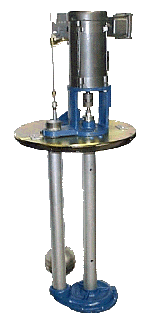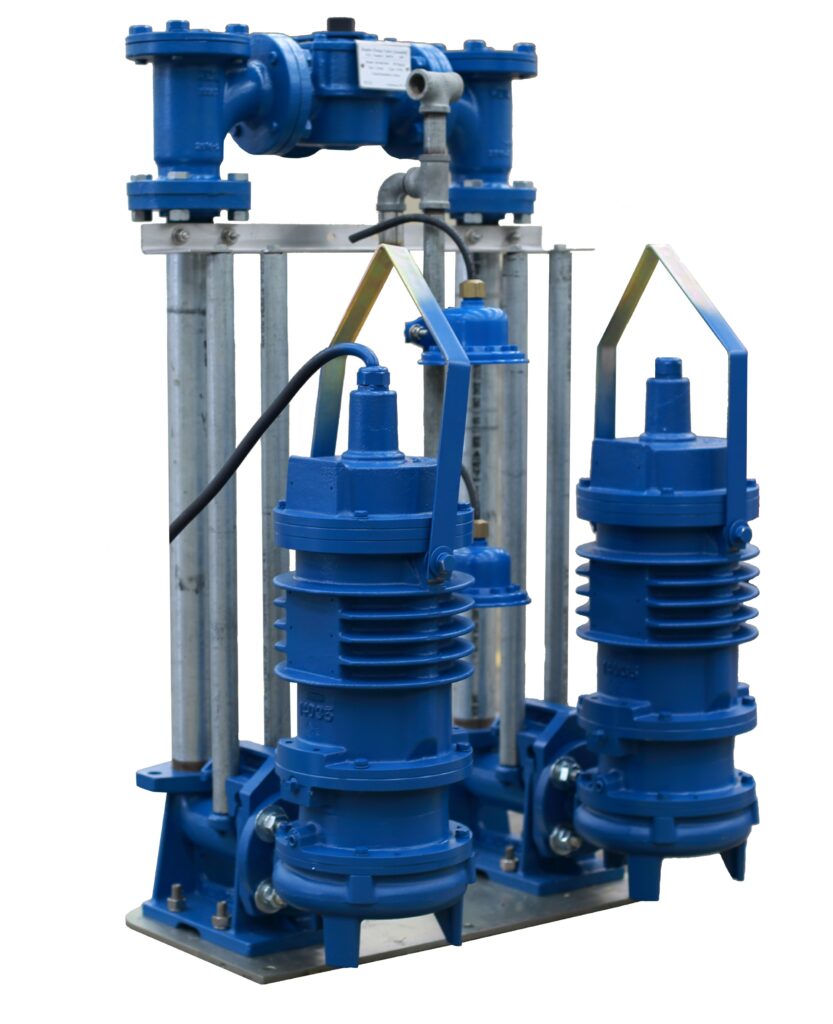|
What is a vertical pump? A vertical centrifugal pump is designed so that the impeller and casing hang from the cover down into the fluid, but the motor is mounted above the cover. Fluid enters through the bottom of the pump and is accelerated by the impeller from the casing up the discharge pipe. (Figure 1) Vertical pumps also known as vertically mounted or suspended pumps provide a long shaft coupled to the motor above and driving the impeller below to generate flow and pressure. The shaft is supported by a sleeve bearing which is lubricated via Zerk fittings every 100 hours. The motor is mounted on a floor plate which mounts to the cover of the ejector basin. The hole in the cover must accommodate the vertical pump casing and discharge piping. Vertical pumps can be controlled by individual mechanical lever switches. Vertical pumps can also be controlled by conventional float switches or level transmitters in simplex or duplex configuration. The advantage of vertically mounted pumps is the motors are not immersed in the pumped fluid. They are often used when the fluid is above 150 ⁰F. The dis-advantage is they must be lubricated regularly or bearing failure and pump failure will result. Another dis-advantage is the basin depth is critical to make the proper length so that the impeller and casing hangs down into the fluid but is not covered with solids. Often if the basin depth is 60 inches, the pump supplied will be 58 inches. |
 Figure 1 – Vertical Pump |
|
What is a Submersible Pump? Submersible pumps are designed to allow the pump motor, casing and impeller to be submerged in the fluid. Submersible pumps allow fluid to enter from the bottom, accelerate the fluid, then directed out the casing through the discharge piping. Submersible pumps can sit on the bottom of the basin or a quick removal elbow to allow easier servicing. (Figure 2) Submersible pumps are designed with one or two mechanical seals. If two mechanical seals are provided, then an oil bath is provided between them to protect and lubricate the mechanical seals. The oil can be monitored to determine if a seal is leaking, and service can be scheduled before catastrophic failure. Submersible pumps allow all components to be mounted below a hatch or cover so that nothing interferes with what is above the basin. This arrangement is often used in parking garages to allow vehicles to pass over the ejector. Submersible pumps are not typically used in fluid above 150 ⁰F due to the drop in motor efficiency. |
Figure 2 – Submersible Quick Removal Mounted Pumps |

